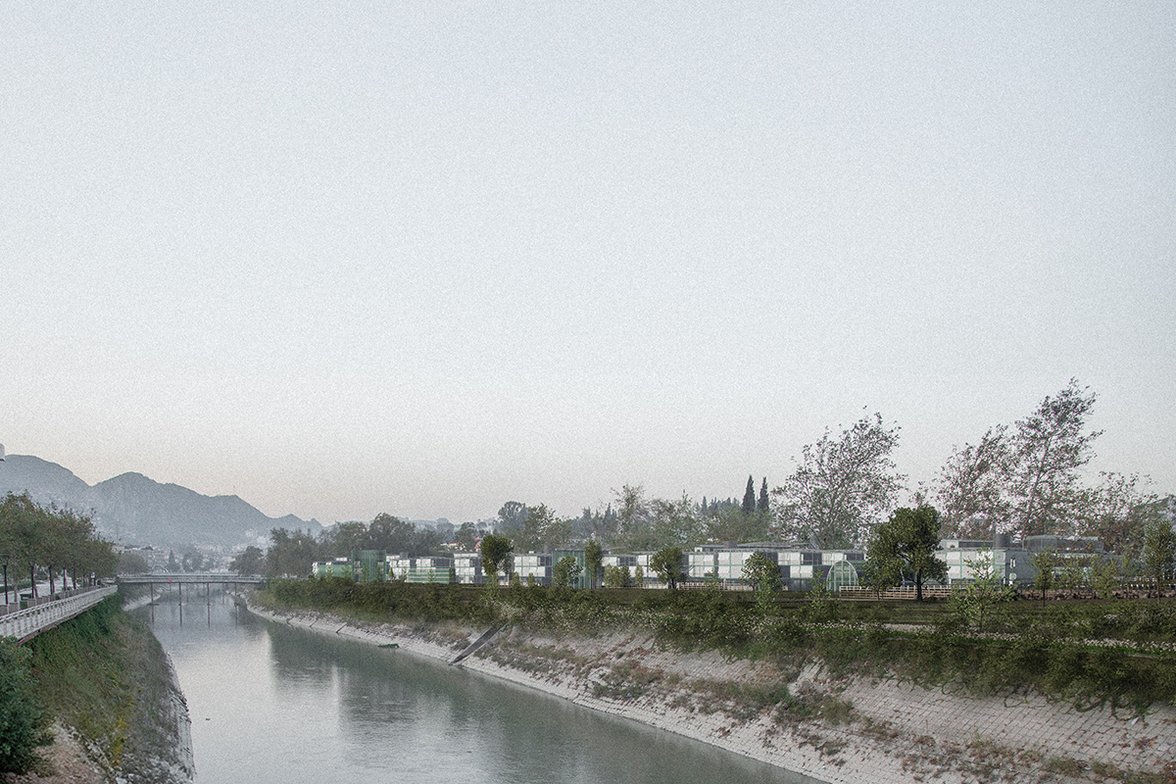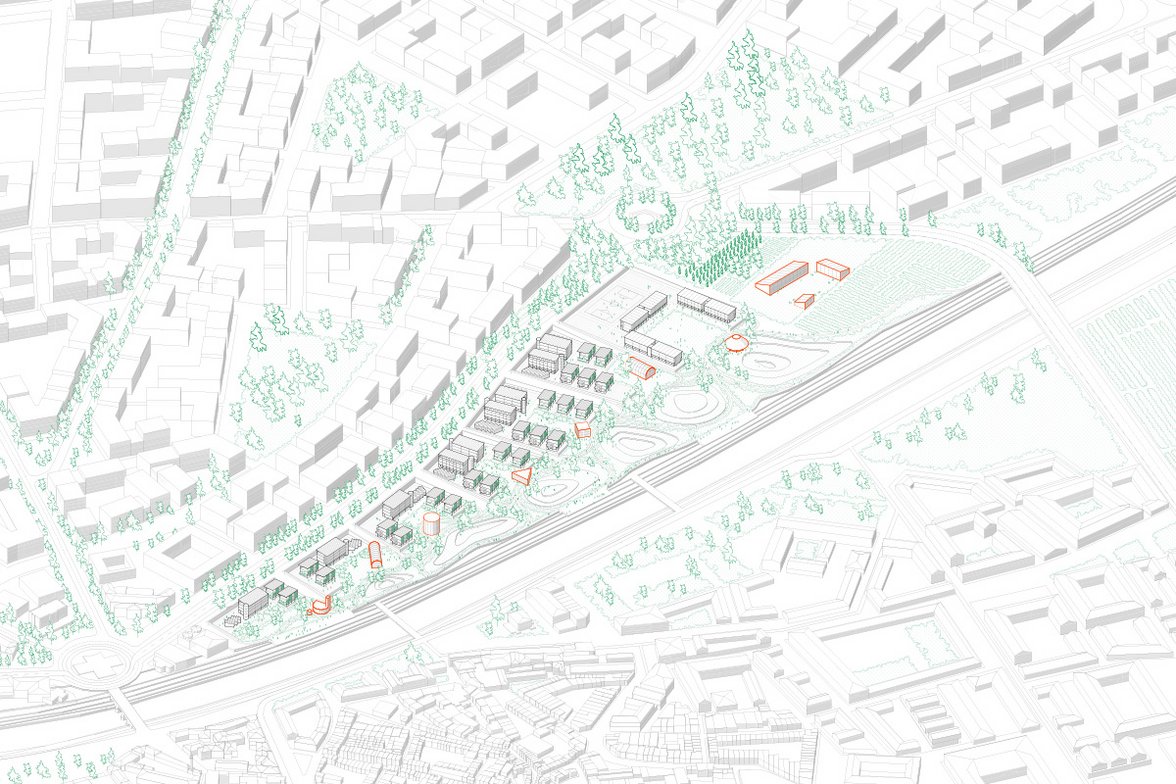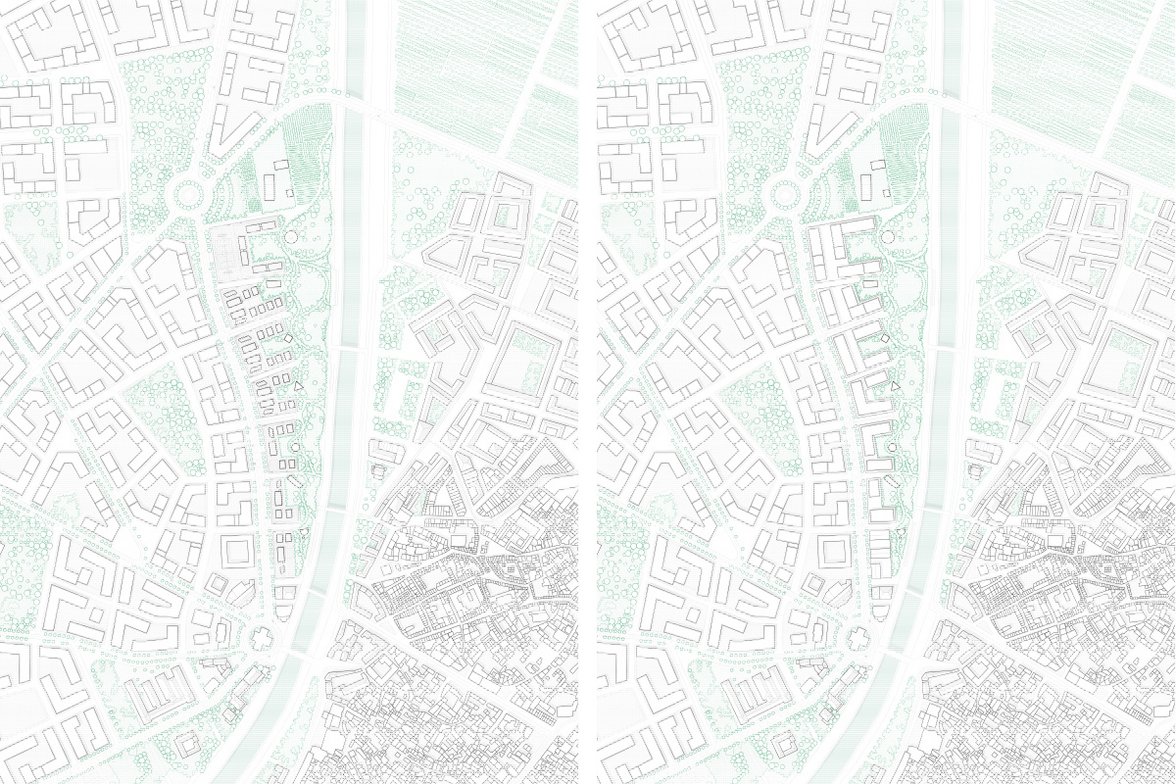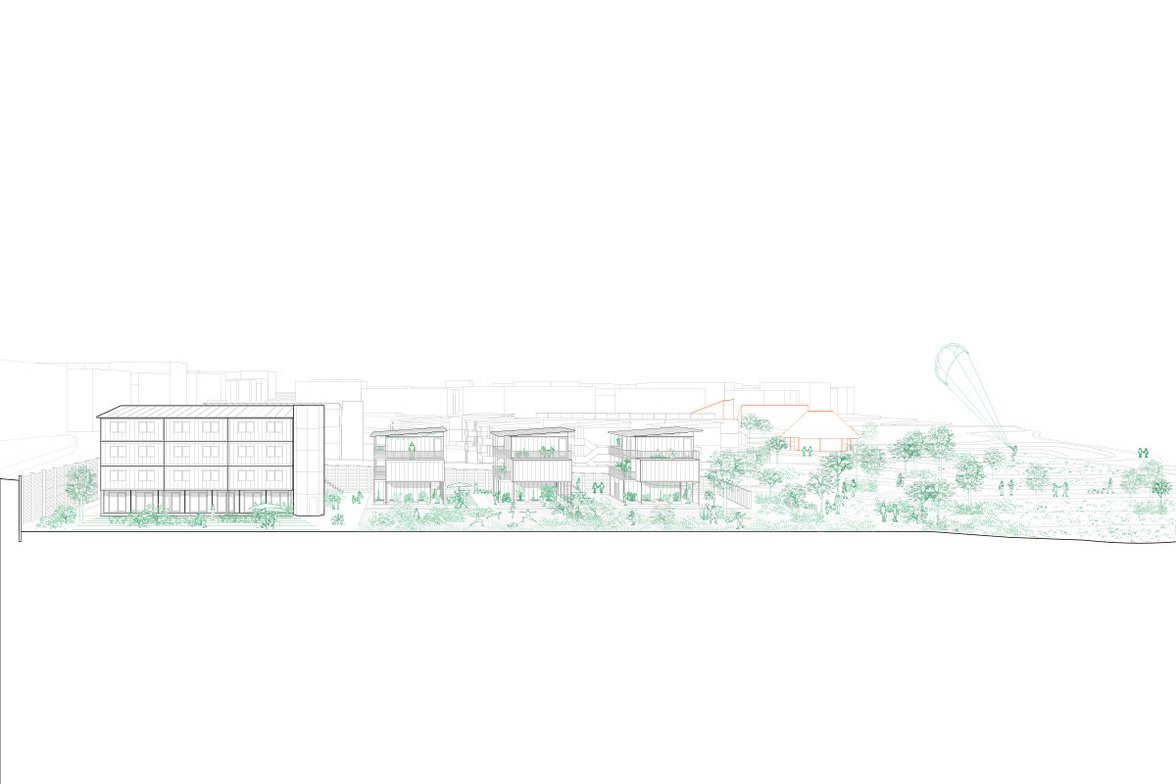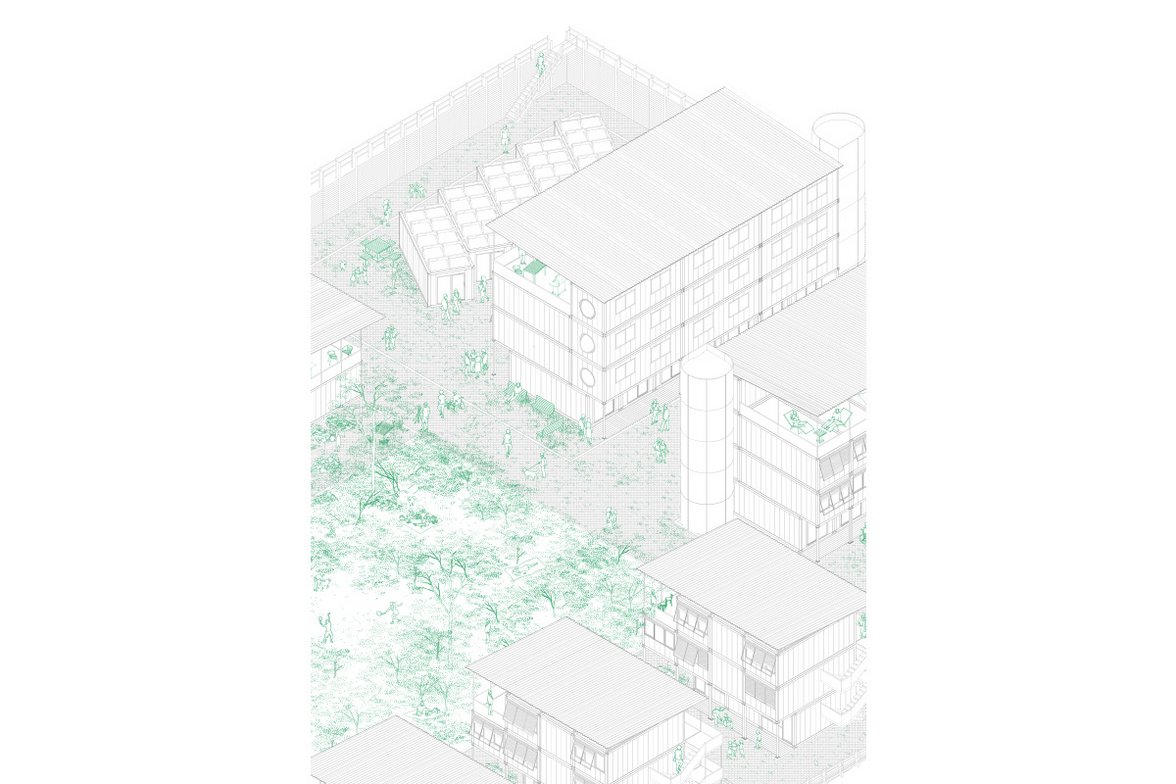Navigating Transitions
freie Masterthesis (WS22|23)
Verfasserin: Zeynap Argat
Investigating adaptable architectural and urban structures allowing for a smooth transition from short term shelter to permanent housing in post-disaster context.
The field of post-disaster architecture navigates between two main disaster relief goals: short-term living and long-term housing. This master’s thesis explores ways to bridge the gap between these two distinct phases, thereby creating a seamless transition in the wake of catastrophic events such as earthquakes. Inspired by recent seismic incidents in Türkiye and Syria, this thesis focuses on enhancing the adaptability of architectural and urban structures within post-earthquake reconstruction.
Disaster relief and reaction fell short in many areas due to inadequate planning in the months that followed the earthquakes in Türkiye. As a result, individuals still lack suitable temporary housing solutions, leading to displacement and relocation to container cities on the city outskirts. Unfortunately, container cities get overlooked because long-term objectives are prioritized by city planners. By coming up with new approaches to tackle this urgent issue, the thesis proposes ways to avoid relocation to the city's outskirts, raise the quality of life, and oer acceptable living standards in the mid-term.
To create structures that show adaptability to satisfy the needs of both short- and long-term tenancy, the thesis looks into temporary and permanent architectural and urban concepts, ensuring a harmonic transition between the dierent stages of post-disaster relief. It looks into design approaches that might be applied to the earthquake-aected area while also taking the sociocultural, economic, and environmental aspects into account. The work hopes to provoke a change in perspective in how we deal with building in post-disaster landscapes to favor community-oriented rebuilding.
